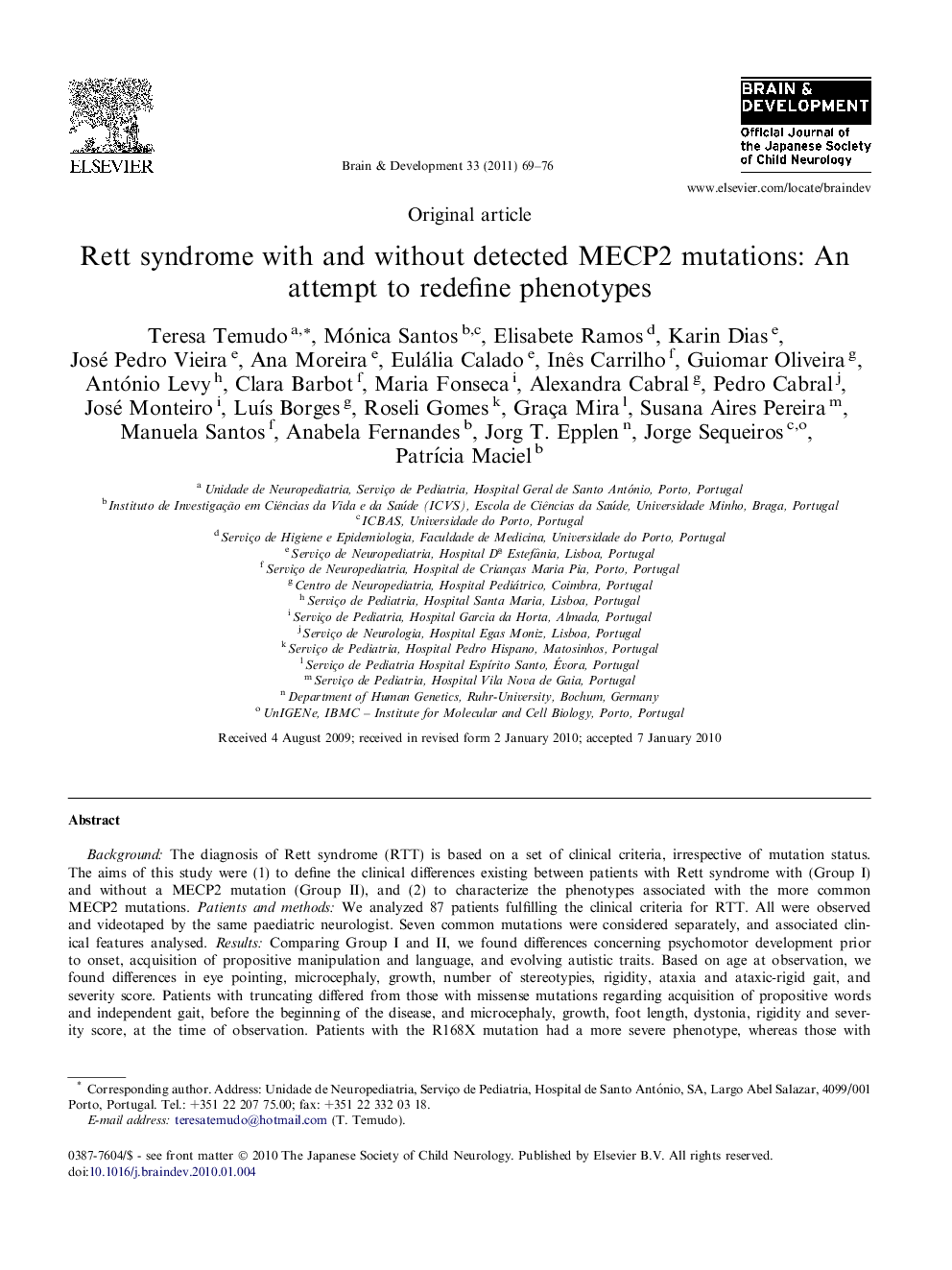| کد مقاله | کد نشریه | سال انتشار | مقاله انگلیسی | نسخه تمام متن |
|---|---|---|---|---|
| 3037667 | 1184425 | 2011 | 8 صفحه PDF | دانلود رایگان |

Background: The diagnosis of Rett syndrome (RTT) is based on a set of clinical criteria, irrespective of mutation status. The aims of this study were (1) to define the clinical differences existing between patients with Rett syndrome with (Group I) and without a MECP2 mutation (Group II), and (2) to characterize the phenotypes associated with the more common MECP2 mutations. Patients and methods: We analyzed 87 patients fulfilling the clinical criteria for RTT. All were observed and videotaped by the same paediatric neurologist. Seven common mutations were considered separately, and associated clinical features analysed. Results: Comparing Group I and II, we found differences concerning psychomotor development prior to onset, acquisition of propositive manipulation and language, and evolving autistic traits. Based on age at observation, we found differences in eye pointing, microcephaly, growth, number of stereotypies, rigidity, ataxia and ataxic-rigid gait, and severity score. Patients with truncating differed from those with missense mutations regarding acquisition of propositive words and independent gait, before the beginning of the disease, and microcephaly, growth, foot length, dystonia, rigidity and severity score, at the time of observation. Patients with the R168X mutation had a more severe phenotype, whereas those with R133C showed a less severe one. Patients with R294X had a hyperactive behaviour, and those with T158M seemed to be particularly ataxic and rigid. Conclusion: A clear regressive period (with loss of prehension and language, deceleration of growth) and the presence of more than three different stereotypies, rigidity and ataxic-rigid gait seemed to be very helpful in differentiating Group I from Group II.
Journal: Brain and Development - Volume 33, Issue 1, January 2011, Pages 69–76